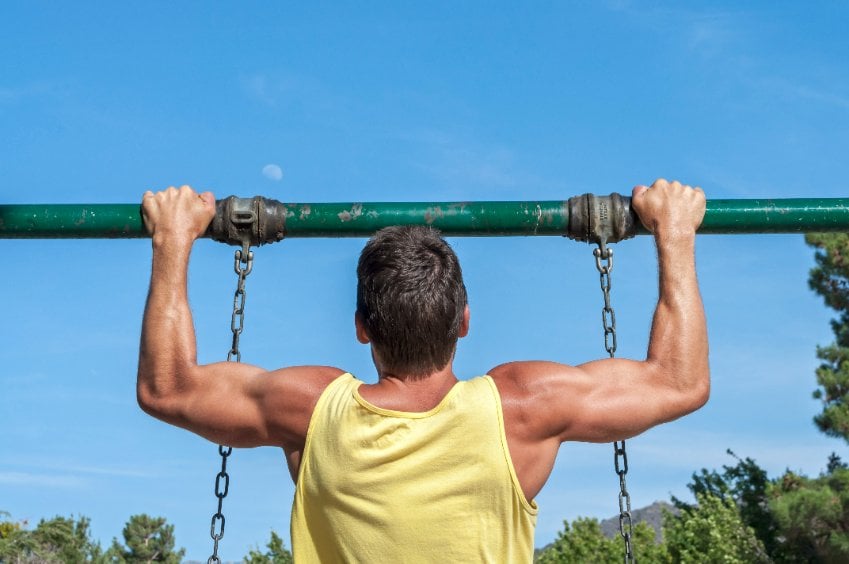Health Is Wealth
From baseball with the kids and showering independently to fully participating in workouts and pulling weeds from the garden, shoulder mobility empowers an independent, productive life. When injury prevents movement, many people experience a lower quality of life. In the United States, the clavicle accounts for 5% of all fractures in adults. While many patients can manage symptoms with physical therapy, surgical intervention may be necessary in extreme cases. Before attempting surgery, progressive shoulder stretching can effectively manage symptoms, limiting overall time spent in a sling.

Use it or lose it
In extreme cases, surgery can be necessary to fix a broken collarbone. When the damaged bone moves too far, surgeons work to move the collarbone to the correct position, placing screws to keep the bone stable throughout the healing process. Patients will typically wear a sling while healing from a broken collarbone, with or without surgery. After a few weeks of downtime, kicking off a daily exercise plan, even while wearing a sling, helps restore function and mobility. Gentle movements such as the pendulum and the tower expand the shoulder area while building back important injury-preventing muscle.
The pendulum
Begin each stretching session with the pendulum, allowing the arm to hang passively while relaxing the shoulder muscles. Move the upper body in a swaying motion, and the arm will move along with the upper body’s motion, creating a gentle stretch. When performed correctly, the patient feels slight tension in the shoulder. The exercise can be performed 2-3 times a week for up to 4 minutes at a time.
The towel
Take a long bath towel in hand, draping the opposite end over the shoulder and down the back. Use the nonimpacted arm to pull the frozen shoulder upward to create a gentle stretch in the side or front shoulder. Hold the position for 2-3 seconds at a time, repeating up to 10 times per week. Then, using the healthy arm, lift the impacted arm to a surface about waist-high. While standing, bend the knees to open up the armpit, gently stretching the frozen shoulder before straightening. With each bend, sink deeper into the stretch.
Got nutrients?
A balanced lifestyle before and after breaking the collarbone raises the likelihood of a fast recovery. Enough sleep, staying hydrated, and minimizing stress help the body heal a broken clavicle. What’s more, foods rich in calcium, iron, and fiber regulate the digestive system while giving the body vital building blocks needed to repair broken bones.
No sling? No problem
While many Americans suffer from collarbone fractures, physical therapy empowers patients to recover mobility and range of motion without surgery. Daily stretching before attempting surgical intervention allows patients to strengthen the surrounding muscles. In cases of surgery, a robust treatment plan in the weeks after the procedure must include a comprehensive physical therapy roadmap. In many cases, gentle consistent movement, even done in a sling, restores range of motion, no surgery needed.
Can Lower Back Pain Return After Spinal Surgery? 3 Lifestyle Changes To Get The Most Out Of Fusion
Minnesota Valley Valley Center2024-04-02T14:49:38-05:00April 15th, 2024|
Spinal surgery is an excellent solution for lower back pain, but symptoms can return. With lifestyle changes, patients can get the most out of fusion.
A New Lease On Life: Exploring How Robotic Total Joint Replacement Can Get You Active Again
Minnesota Valley Valley Center2024-03-24T17:38:47-05:00March 29th, 2024|
Robotic total joint replacement uses a robotic arm to replace the joint. This innovative approach allows a quick return to activities.
Restoring Dexterity: How Outpatient Carpal Tunnel Surgery Can Change Your Life
Minnesota Valley Valley Center2024-03-24T17:38:37-05:00March 15th, 2024|
After months of wrist and hand pain, carpal tunnel surgery may be needed. With outpatient options, restored dexterity with less pain and discomfort is possible.
More Articles from MVSC
February 15, 2024
A fractured collarbone is painful and limits movement. A doctor can help determine if surgery or immobilization is the best choice.
June 21, 2023
Discover the benefits of choosing an ambulatory surgery center over a hospital. ASCs offer lower costs, convenience and fewer infections.
July 21, 2022
Ligaments take time to heal after reconstruction. With proper care, most patients can restore full range of motion within a few months.
June 28, 2022
Spinal arthritis can reduce the space for nerves and the spinal cord. In some cases where treatment fails, a laminectomy can help.










